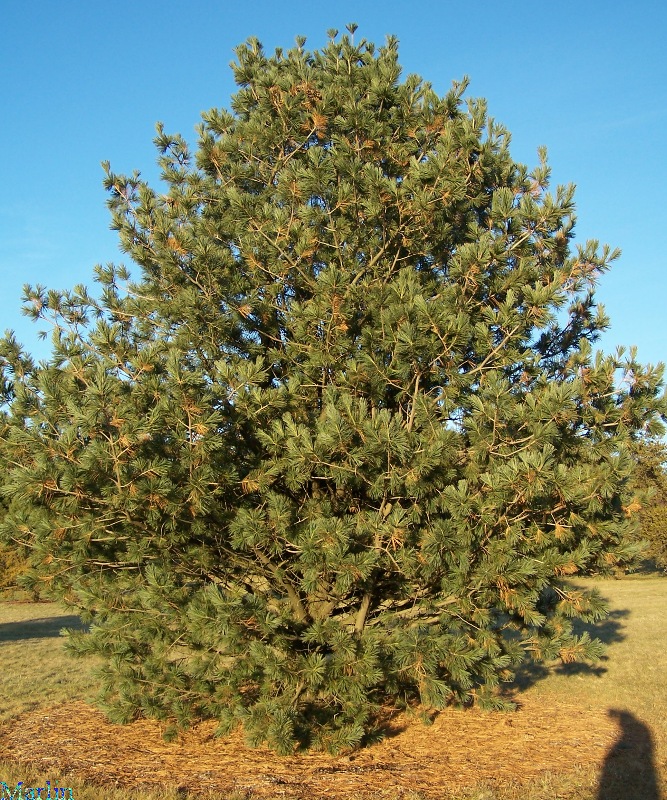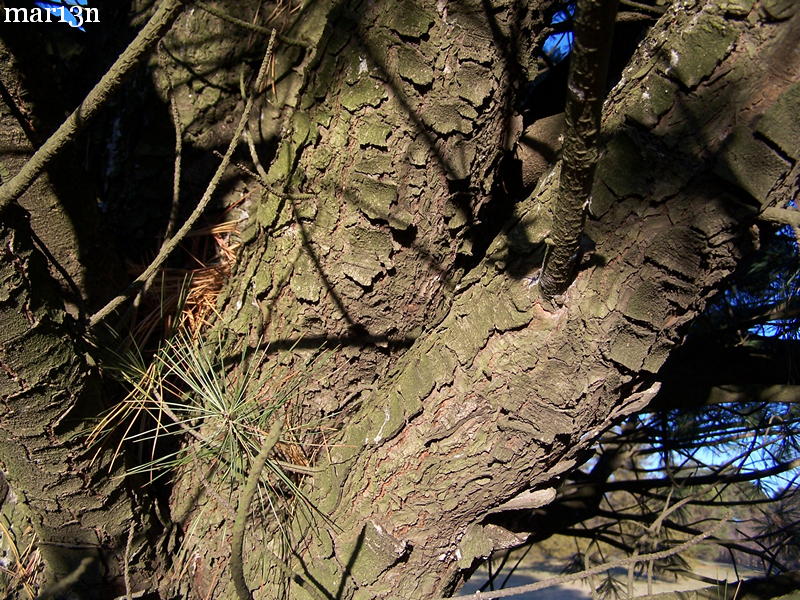Limber Pine – Pinus flexilis
Family Pinaceae: Pine, Cedar, Spruce, Fir
Limber pine is a slow growing, long-lived species, sometimes taking several hundred years to reach maturity. Mature trees may exceed 1000 years of age. Limber pine stands are broadly even-aged, though populations also occur in uneven-aged stands and on very harsh sites as widely spaced, isolated individuals [96,102,112]. Trees often have an irregular or multi-stem growth form, and rarely reach over 50 feet (15 m). At high elevations they sometimes form krummholz (stunted, twisted shrub-like formations caused by exposure to wind. German for “twisted wood”). Trunks may reach 6.5 feet (2 m) in diameter. The species is cold and drought tolerant. Trees are ectomycorrhizal, have deep taproots, and are very windfirm. Limber pine is often killed by fire because of its relatively thin bark.
Limber pine grows across a wider range of elevations that any other tree species in the central Rocky Mountains, inhabiting some of the driest sites capable of supporting trees.

The large, wingless seeds of limber pine have high energy content. Pine “nuts” provide critical food for rodents and birds, which cache the seeds for later use. Other small mammals and birds benefit from these caches. Bears also feed from caches. Sites with limber pine provide key winter range for deer and elk. Bighorn sheep use open stands on ridges. Difficult access and low grass production result in low forage value of limber pine stands for livestock.
Because of its slow growth, limber pine has been used only to a limited extent in land reclamation projects. Vegetation recovery is slow on the exposed, hot, dry, rocky sites where it is found, and soil erosion can prevent complete restoration. However, limber pine’s drought tolerance and ability to survive at high elevations indicate that it has potential for use in revegetation projects.
Management of limber pine forests associated with Douglas-fir typically favors the growth of the economically important Douglas-fir. Of primary management importance in these areas is watershed protection and enhancement. Forage productivity can be increased by periodic surface fires [3].

The wood of limber pine has little commercial value. Its potential for timber and fuelwood production is low, because the trees are slow growing with irregular form. Limber pine has been used locally for mine props and railroad ties [3].
Limber pine dwarf mistletoe (Arceuthobium cyanocarpum) is a damaging parasite of limber pine, whitebark pine (P. albicaulis Engelm.), Rocky Mountain bristlecone pine (P. aristata Engelm.) and Great Basin bristlecone pine (P. longaeva D.K. Bailey). Limber pine dwarf mistletoe occurs in the Rocky Mountains from southern Montana to southern Colorado and Utah. It also occurs in widely scattered populations in the Great Basin (southern Idaho, western Utah and Nevada), and in the southern Sierra Nevada Mountains.
Limber pine dwarf mistletoe is a small, parasitic flowering plant. The external (aerial) shoots are yellow-green, have inconspicuous scale-like leaves at the nodes, and are perennial. Plants are typically densely clustered around infected tree branches. On the average, plants are only 1 inch (3 cm) tall, but they are sometimes as tall as 3 inches (7 cm) (Figure 2). Aerial shoots arise from a network of root-like, absorbing strands imbedded in host tissues. This network, called the endophytic system, consists of cortical strands growing within the bark and sinkers within the wood. The endophytic system extracts nutrients and water from the host tree. The endophytic system lives as long as adjacent host tissues are alive. The mistletoe is dependent upon its host for water and nutrients. The aerial shoots do contain chlorophyll, but they produce minor amounts of carbohydrates [1].
References:
1. Jane E. Taylor1 and Robert L. Mathiason, “Limber Pine Dwarf Mistletoe” Forest Insect and Disease Leaflet
2. USDA, ARS, National Genetic Resources Program. Germplasm Resources Information Network – (GRIN)
3. U.S. Forest Service Fire Effects Information Pinus flexilis
Family Pinaceae: Pine, Cedar, Spruce, Fir
Trees Index | Pine Family | Beech, Oak | Nut Trees | Birch Family | Magnolias
Tree Encyclopedia / North American Insects & Spiders is dedicated to providing family-friendly educational
resources for our friends around the world through large images and macro photographs of flora and fauna.

